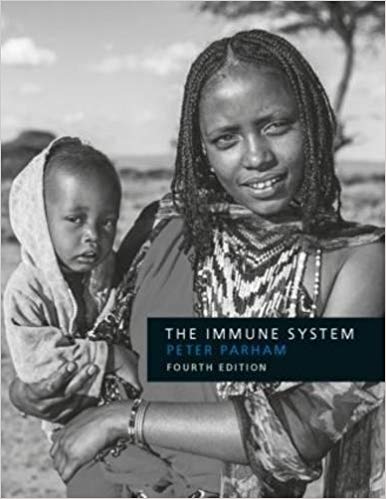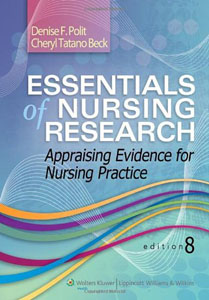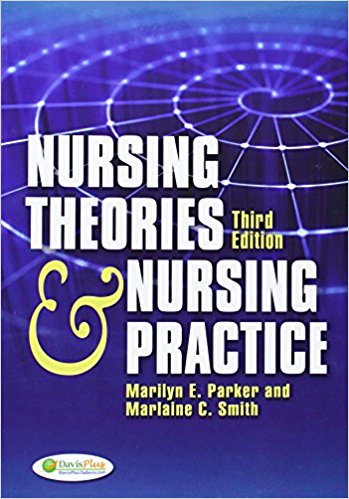Test Bank For Immune System 4th Edition By Parham
Original price was: $75.00.$25.00Current price is: $25.00.
Test Bank For Immune System 4th Edition By Parham is a reliable study guide that can help you prepare for your exams. It contains all the necessary information that you need to know about your subject matter. The Test Bank also comes with practice questions to test your understanding of the material. In addition, the Test Bank provides detailed explanations for each answer so that you can learn from your mistakes. With the Test Bank, you can be confident that you will be able to ace your exams.
Digital item No Waiting Time Instant Download
- SBN-10 : 0815345267
- ISBN-13 : 978-0815345268
Description
Test Bank For Immune System 4th Edition By Parham
THE IMMUNE SYSTEM, FOURTH EDITION
CHAPTER 5: ANTIGEN RECOGNITION BY T LYMPHOCYTES
© 2015 Garland Science
5–1 T cells recognize antigen when the antigen
a. forms a complex with membrane-bound MHC molecules on another host-derived cell
b. is internalized by T cells via phagocytosis and subsequently binds to T-cell receptors in the endoplasmic reticulum
c. is presented on the surface of a B cell on membrane-bound immunoglobulins
d. forms a complex with membrane-bound MHC molecules on the T cell
e. bears epitopes derived from proteins, carbohydrates, and lipids.
5–2 T-cell receptors structurally resemble
a. the Fc portion of immunoglobulins
b. MHC class I molecules
c. secreted antibodies
d. a single Fab of immunoglobulins
e. CD3 ε chains.
5–3 If viewing the three-dimensional structure of a T-cell receptor from the side, with the T-cell membrane at the bottom and the receptor pointing upwards, which of the following is inconsistent with experimental data?
a. The highly variable CDR loops are located across the top surface.
b. The membrane-proximal domains consist of Cα and Cβ.
c. The portion that makes physical contact with the ligand comprises Vβ and Cβ, the domains farthest from the T-cell membrane.
d. The transmembrane regions span the plasma membrane of the T cell.
e. The cytoplasmic tails of the T-cell receptor α and β chains are very short.
5–4 Unlike B cells, T cells do not engage in any of the following processes except
a. alternative splicing to produce a secreted form of the T-cell receptor
b. alternative splicing to produce different isoforms of the T-cell receptor
c. isotype switching
d. somatic hypermutation
e. somatic recombination
5–5 When comparing the T-cell receptor α-chain locus with the immunoglobulin heavy-chain locus, all of the following are correct except
a. the T-cell receptor α locus differs because it has embedded within its sequence another locus that encodes a different type of T-cell receptor chain
b. both are encoded on chromosome 14
c. the T-cell receptor α-chain locus does not contain D segments
d. the T-cell receptor α-chain locus contains more V and J regions
e. the T-cell receptor α-chain locus contains more C regions
f. they both contain exons encoding a leader peptide.
5–6 Unlike the C regions of immunoglobulin heavy-chain loci, the C regions of the T-cell receptor β-chain loci
a. are functionally similar
b. do not contain D segments
c. are more numerous
d. are encoded on a different chromosome from the variable β-chain gene segments of the T-cell receptor
e. do not encode a transmembrane region
f. possess non-templated P and N nucleotides.
5–7 Which of the following statements regarding Omenn syndrome is incorrect?
a. A bright red, scaly rash is due to a chronic inflammatory condition.
b. Affected individuals are susceptible to infections with opportunistic pathogens.
c. It is invariably fatal unless the immune system is rendered competent through a bone marrow transplant.
d. It is the consequence of complete loss of RAG function.
e. There is a deficiency of functional B and T cells.
f. It is associated with missense mutations of RAG genes.
5–8
A. Identify which features of the RAG genes have similarity to the transposase gene of transposons.
B. Explain how the mechanisms for immunoglobulin and T-cell receptor rearrangement may have evolved in humans.
5–9 All of the following statements regarding γ:δ T cells are correct except
a. they are more abundant in tissue than in the circulation
b. the δ chain is the counterpart to the β chain in α:β T-cell receptors because it contains V, D, and J segments in the variable region
c. they share some properties with NK cells
d. activation is not always dependent on recognition of a peptide:MHC molecule complex
e. expression on the cell surface is not dependent on the CD3 complex.
5–10 Match the term in Column A with its complement in Column B.
|
Column A |
Column B |
|
___a. T-cell receptor δ-chain gene |
1. positioned in the T-cell receptor α-chain locus between Vα and Jα gene segments |
|
___b. CD3 complex |
2. made up of γ, δ and ε components |
|
___c. T-cell receptor β-chain gene |
3. located on chromosome 7 |
|
___d. CD4 |
4. counterpart to the T-cell receptor α-chain gene |
|
___e. T-cell receptor γ-chain gene |
5. four extracellular domains |
5–11 During T-cell receptor _____-gene rearrangement, two D segments may be used in the final rearranged gene sequence, thereby increasing overall variability of this chain.
a. α
b. β
c. γ
d. δ
e. ε.
5–12 The degradation of pathogen proteins into smaller fragments called peptides is a process commonly referred to as
a. endocytosis
b. promiscuous processing
c. antigen processing
d. antigen presentation
e. peptide loading.
5–13 All of the following are primarily associated with CD4 T-cell function except
a. improve phagocytic mechanisms of tissue macrophages
b. assist B cells in the production of high-affinity antibodies
c. kill virus-infected cells
d. facilitate responses of other immune-system cells during infection
e. assist macrophages in sustaining adaptive immune responses through their secretion of cytokines and chemokines.





Be the first to review “Test Bank For Immune System 4th Edition By Parham”